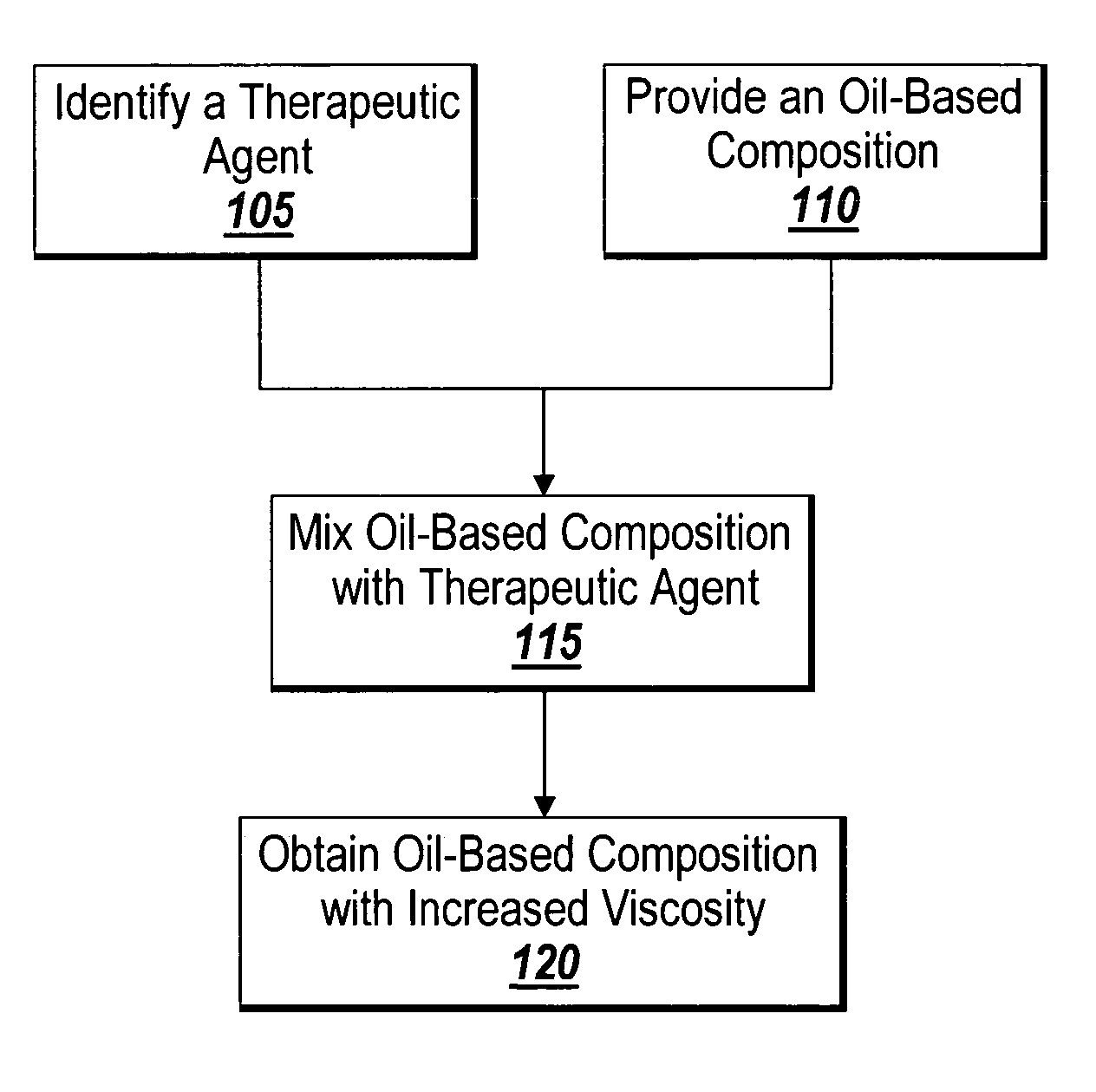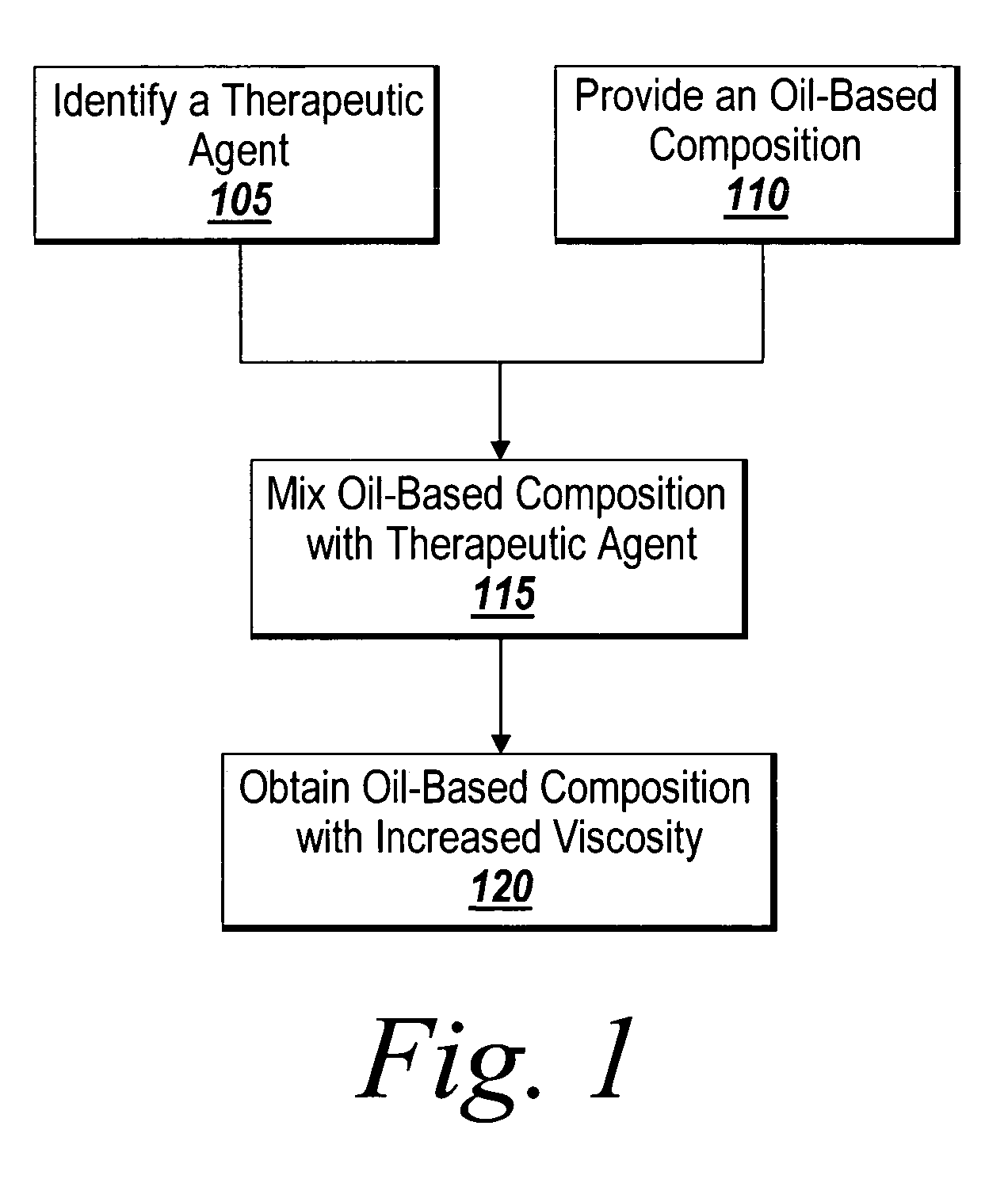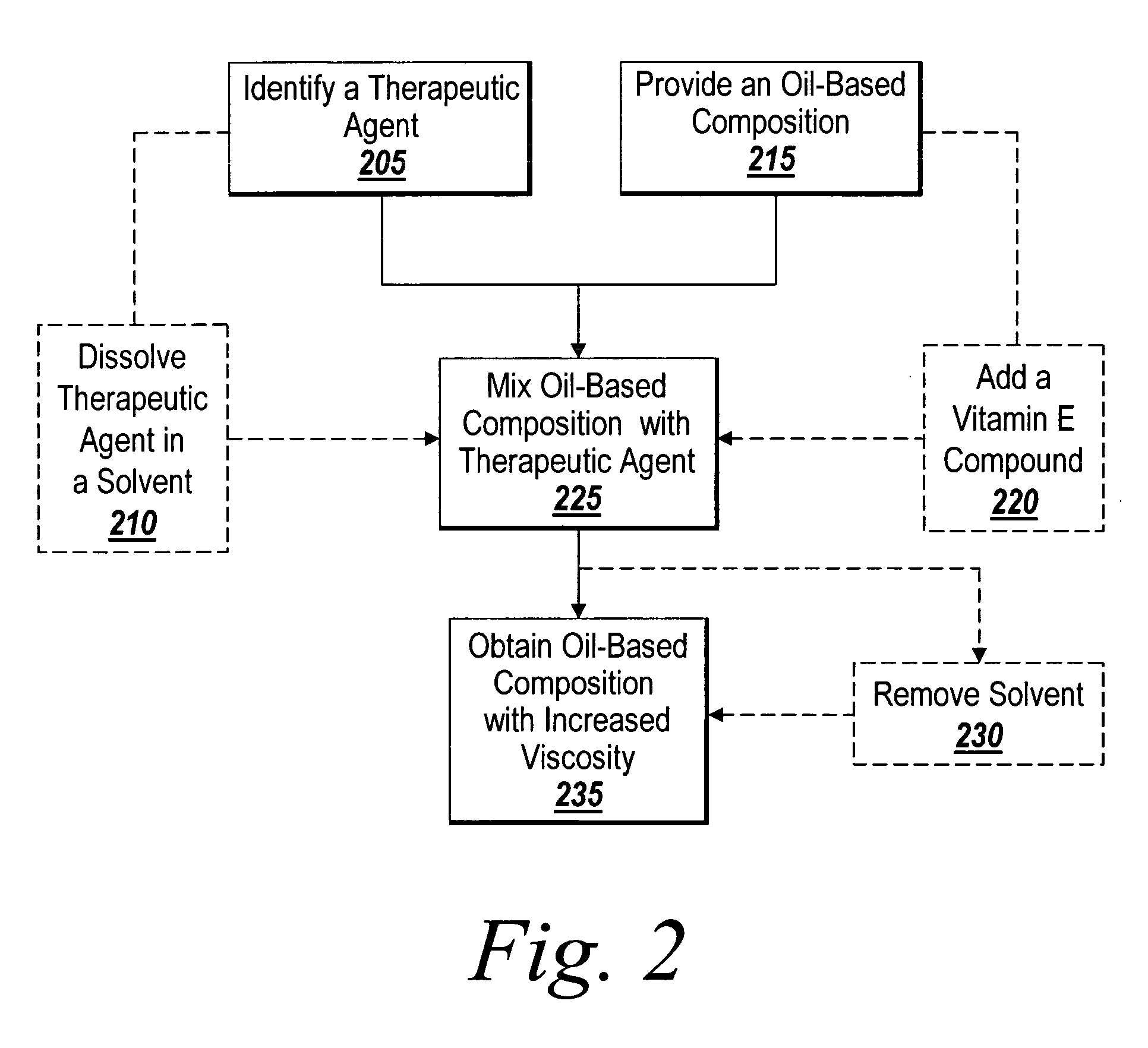Method of thickening a coating using a drug
a technology of coating and drug, applied in the field of coatings and preparations of coatings, can solve the problems of serious orally administered drugs may not achieve the desired effect in the area of the body, and achieve the effects of reducing the risk of bleeding complications and other side effects, promoting endothelialization, and inhibiting restnosis and neointimal growth
- Summary
- Abstract
- Description
- Claims
- Application Information
AI Technical Summary
Benefits of technology
Problems solved by technology
Method used
Image
Examples
example # 1
EXAMPLE #1
[0126] An oil composition (Mixture A) was prepared by mixing 5 grams of fish oil with 5 grams of vitamin E. A therapeutic component was prepared by mixing 520 mg of rapamycin in 1690 mg of NMP and dissolving with a combination of vortexing and sonication to form mixture B. An amount of 1018 mg of mixture A was then added to mixture B and the two mixtures were combined by vortexing to form Mixture C. Mixture C was then placed in a 10 CC syringe and put onto a rotating fixture in a vacuum bell jar at a pressure of 50 mtorr for 50 hours. The resulting mixture D, which is a drug thickened version of Mixture A, had a final drug content of 33.8%. Mixture A and mixture D were then tested on a Physica MCR Rheometer and the viscosity was recorded at a sheer rate of 11 / s. Mixture A was found to have a viscosity of 180 Cps and the drug thickened sample D was found to have a viscosity of 20,000 Cps.
example # 2
EXAMPLE #2
[0127] An oil composition (Mixture A) was prepared by mixing 1.5 grams of fish oil with 3.5 grams of vitamin E. A therapeutic component was prepared by mixing 759 mg of Cyclosporine in 777 mg of Ethanol and dissolving with a combination of vortexing and sonication to form mixture B. An amount of 1487 mg of mixture A was then added to mixture B and the two mixtures were combined by vortexing to form Mixture C. Mixture C was then placed in a 10 CC syringe and put onto a rotating fixture in a vacuum bell jar at a pressure of 50 mtorr for 50 hours. The resulting mixture D which is a drug thickened version of Mixture A had a final drug content of 33.8%. Mixture A and mixture D were then tested on a Physica MCR Rheometer and the viscosity was recorded at a sheer rate of 11 / s. Mixture A was found to have a viscosity of 688 Cps and the drug thickened sample D was found to have a viscosity of 27,350 Cps.
example # 3
EXAMPLE #3
[0128] An oil composition (Mixture A) was prepared by mixing 1.5 grams of fish oil with 3.5 grams of vitamin E. A therapeutic component was prepared by mixing 77 mg of Cyclosporine in 1424 mg of Ethanol and dissolving with a combination of vortexing and sonication to form mixture B. An amount of 1433 mg of mixture A was then added to mixture B and the two mixtures were combined by vortexing to form Mixture C. Mixture C was then placed in a 10 CC syringe and put onto a rotating fixture in a vacuum bell jar at a pressure of 50 mtorr for 50 hours. The resulting mixture D, which is a drug thickened version of Mixture A, had a final drug content of 5.1%. Mixture A and mixture D were then tested on a Physica MCR Rheometer and the viscosity was recorded at a sheer rate of 11 / s. Mixture A was found to have a viscosity of 688 Cps and the drug thickened sample D was found to have a viscosity of 11,080 Cps.
PUM
| Property | Measurement | Unit |
|---|---|---|
| melting point | aaaaa | aaaaa |
| viscosity | aaaaa | aaaaa |
| area | aaaaa | aaaaa |
Abstract
Description
Claims
Application Information
 Login to View More
Login to View More - R&D
- Intellectual Property
- Life Sciences
- Materials
- Tech Scout
- Unparalleled Data Quality
- Higher Quality Content
- 60% Fewer Hallucinations
Browse by: Latest US Patents, China's latest patents, Technical Efficacy Thesaurus, Application Domain, Technology Topic, Popular Technical Reports.
© 2025 PatSnap. All rights reserved.Legal|Privacy policy|Modern Slavery Act Transparency Statement|Sitemap|About US| Contact US: help@patsnap.com



